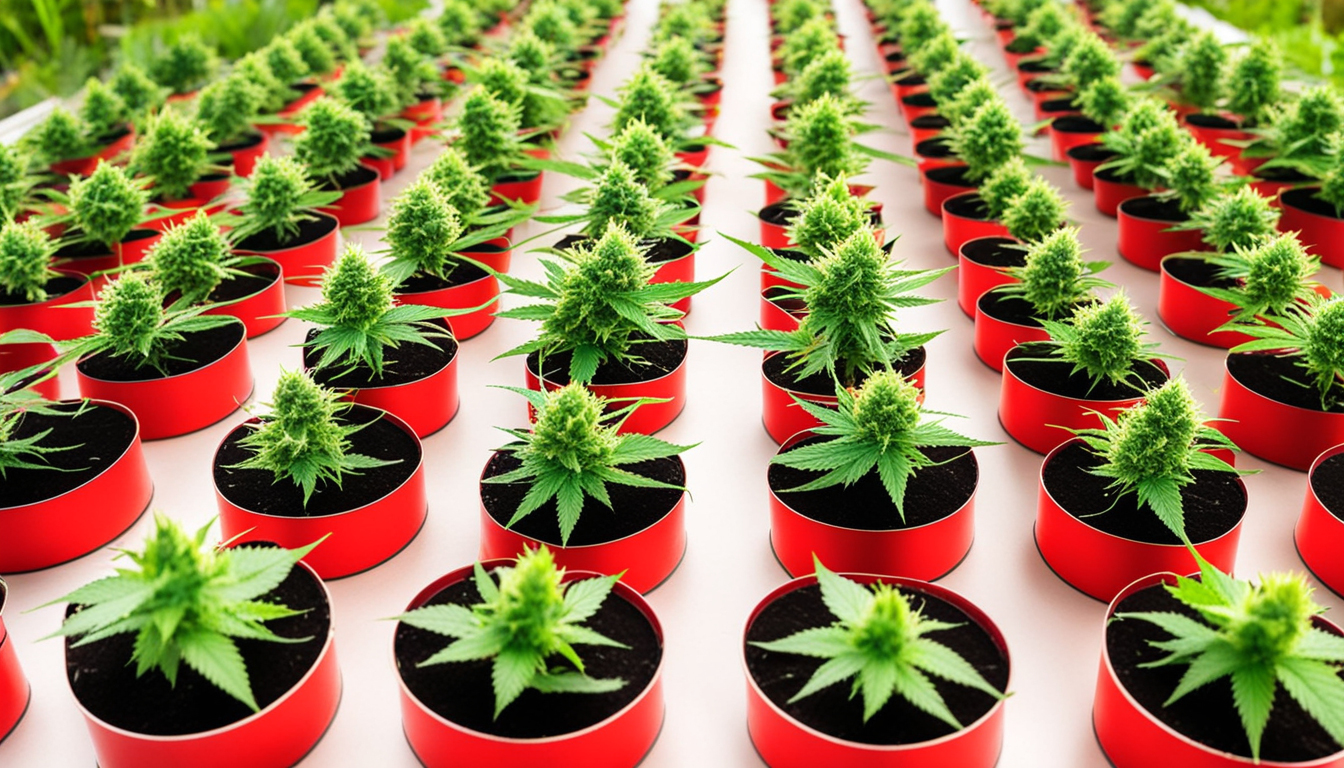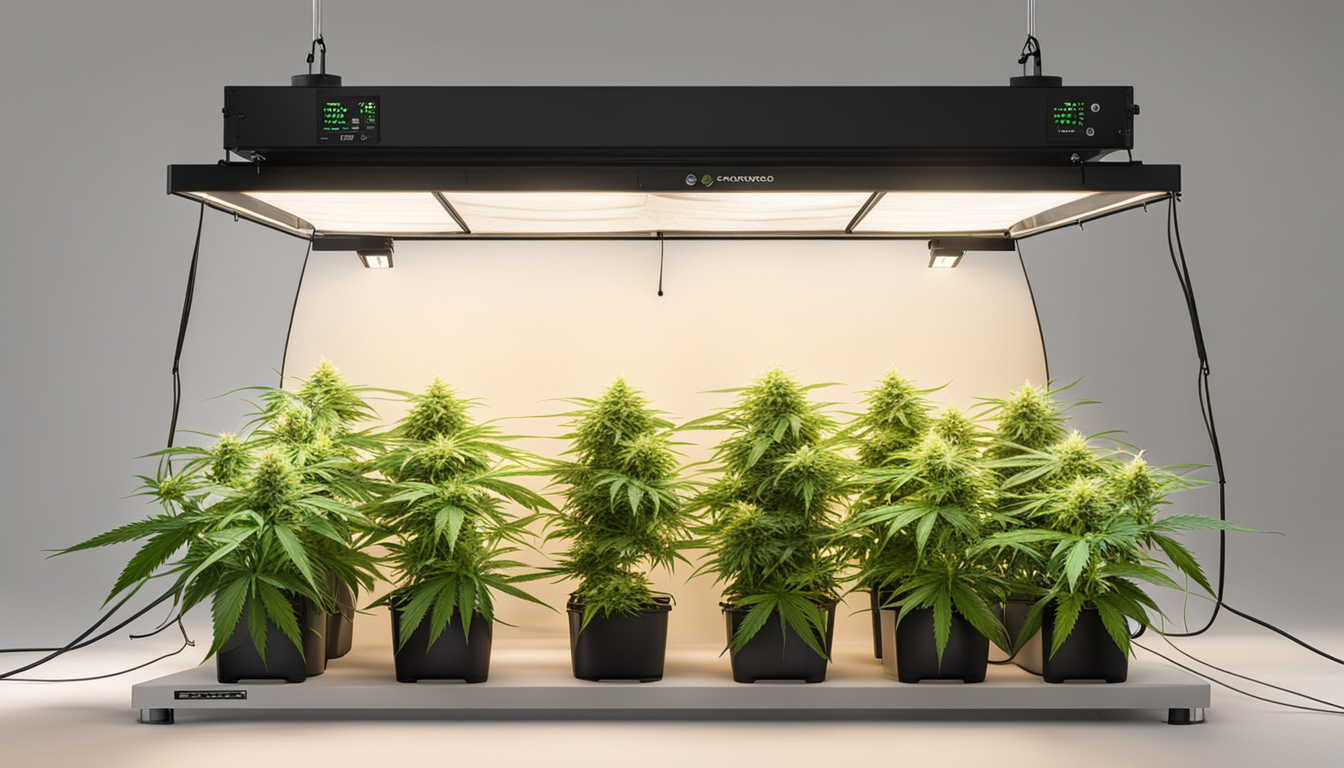Pot Growing Guide

Whether you're just starting out with pot cultivation or looking to improve your existing crop, following this complete guide will help you produce big, high-quality yields right at home. With the right supplies, techniques, and care, growing weed indoors can be an extremely satisfying and cost-effective endeavor.
Choosing Pot Strains
The first step in planning your indoor grow is choosing the right marijuana varieties to cultivate. The three main types of cannabis plants each have their own qualities.
Energizing strains
Known for their invigorating cerebral effects, sativas spread tall and slender with narrow leaves. They thrive in warmer tropical climates and have a longer blooming time between 10-12 weeks indoors. Top sativa varieties include Jack Herer, Durban Poison, Super Lemon Haze, and Jack Herer.
Indicas
Indicas provide calming body-focused effects and spread short and bushy with broad leaves. Accustomed to colder mountain climates, they flower faster within 8-9 weeks. Popular relaxing strains include Granddaddy Purple, Northern Lights, and Bubba Kush.
Mixed strains
Hybrid strains mix traits from both sativas and indicas. They offer blended effects and have moderate flowering times around 9-10 weeks. Well-known mixes are OG Kush, Girl Scout Cookies, and Blue Dream.

Setting Up Your Cultivation Space
Weed plants need the right controlled environment to succeed. Key factors for indoor grows are lights, ventilation, layout, and finding the ideal discreet area.
Location
Choose an unused space with direct access to water and power outlets. An empty spare room, large closet, corner of the basement, or grow tent tucked away in a garage all make great stealthy cultivation room spots.
Lights
Weed requires powerful light for all growth stages. LEDs are efficient and come in full spectrum options replicating natural sunlight. Provide 15-25 watts per sq. ft for the growth stage and 20-40 watts per sq. ft. for bloom.
Ventilation
Proper ventilation and exhaust systems keep ideal temperature, humidity, and pure CO2 levels. Install silent 10-15 cm fans or carbon filters to circulate old air and eliminate smells.
Layout
Optimize your space by arranging plants carefully under the lamps and leaving room to access and work around them. Set up distinct zones for growth, flowering, curing, and propagation.

Growing Mediums
Weed can be cultivated in various substrates, each with pros and cons. Pick a suitable option for your specific setup and cultivation style.
Soil
The traditional substrate, soil is inexpensive and easy for beginners. It provides great flavor but needs more irrigation and nutrients to feed plants. Enrich soil with vermiculite or coco to improve drainage.
Coconut coir
Made from coir, renewable coconut fiber holds water but still lets in air to the roots. It's more sterile and more consistent than soil. Use coir-specific nutrients to avoid calcium buildup.
Hydroponics
In hydro systems, plant roots grow directly in nutrient water solution. This allows quick development but needs careful observation of water chemistry. Deep water culture and drip systems are popular methods.
Sprouting Seeds
Germination activates your weed seeds to start growing radicles. This prepares them for planting into their growing medium.
Paper Towel Method
Place seeds between moist paper towel and maintain them moist. Check after 2-7 days for emerging taproots indicating germination is complete.
Direct Planting
Plant seeds right into wetted cultivation medium 6mm deep. Gently water and wait 7-14 days until seedlings break through the top.
Cubic rockwool
Soak cubic rockwool starters in pH-adjusted water. Insert seeds 1⁄4 inch deep into the cubes. Keep cubes moist until seedlings appear within a week to 2 weeks.
Repotting Young plants
Once germinated, weed seedlings need to be transplanted to avoid overcrowding. Move them into appropriately sized containers.
Ready Containers
Load large pots with growing medium enriched with time-released fertilizer. Let containers to absorb water overnight before transplanting.
Carefully Transplanting
Gently loosen young roots from sprouting medium using a spade. Place into prepared container at equal depth as before and gently water in.
Vegetative Stage
The vegetative stage promotes foliage and plant form through 18-24 hours of daily lighting intensity. This stage usually lasts 4-8 weeks.
Providing 3/4 to full day of Lighting
Use lamps on a 24 hour schedule or outdoor light to trigger nonstop growth. Light intensity influences height and node distance.
Fertilizing
Use vegetative stage fertilizers richer in nitrogen. Make sure pH remains around 5.8-6.3 for proper nutrient uptake. Feed 1⁄4 to 1⁄2 concentration after 14 days and increase gradually.
LST and topping
Topping, low stress training, and trellising direct shoot patterns for even foliage. This increases yields.

Bloom Stage
The flowering stage grows buds as plants Request More Info show their sex under a 12/12 cycle schedule. It lasts 2-3 months depending on variety.
Changing Light Schedule
Change grow lights to 12/12 or move outside for natural 12 hour cycle. This triggers plants to start blooming.
Stop Fertilizing
Leaching removes fertilizer residuals to improve flavor. Fertilize lightly the first weeks then just use plain water the last 2 weeks.
Flushing
Continue 12 hour photoperiod but flush using neutral pH water only. Resume clean watering if buds aren't mature after two weeks.
Reaping
Knowing when marijuana is fully ripe delivers peak cannabinoid content and aroma. Cut down plants at peak ripeness.
Signs of readiness
Look for fading pistils, swelling calyxes, and 10-15% cloudy trichs. Inspect buds across the plant as they won't all mature evenly.
Cutting Plants
Use sterilized, razor-sharp pruning shears to gently cut each plant at the base. Leave 5-10cm of stalk attached.
Drying
Hang intact plants or branches upside down in a lightless room with moderate temperature and RH around 45-65% for 7-14 days.
Curing
Aging keeps drying while improving the buds like aged spirits. This process smooths bitterness and intensifies cannabinoid and terpene profiles.
Curing containers
Manicure dried buds from stems and store into sealed containers, packing about 75% capacity. Use a hygrometer to measure container moisture.
Opening jars daily
Open jars for a short time each day to slowly lower humidity. Rehydrate buds if RH drops below 55%.
Final Cure
After 2-3 weeks when moisture levels off around 55-65%, perform a final manicure and keep forever in sealed jars.
Common Problems and Solutions
Even experienced cultivators run into different cannabis plant problems. Identify issues soon and fix them correctly to maintain a strong garden.
Poor feeding
Chlorosis often indicate insufficient nitrogen. Purpling stems and leaves show low phosphorus. Test pH and boost fertilizers gradually.
Pests
Spider mites, fungus gnats, mites, and nematodes are frequent pot pests. Use neem oil sprays, ladybugs, and sticky traps for natural control.
Mold
Excessive moisture promotes botrytis and root rot. Increase circulation and venting while lowering humidity below 50% during flowering.

Summary
With this complete indoor pot growing guide, you now have the info to cultivate plentiful potent buds for personal harvests. Apply these techniques and methods during the seed starting, vegetative, and flowering stages. Spend in good gear and carefully monitor your plants. In time, you'll be rewarded with sticky fragrant buds you raised yourself under the loving care of your green thumbs. Happy growing